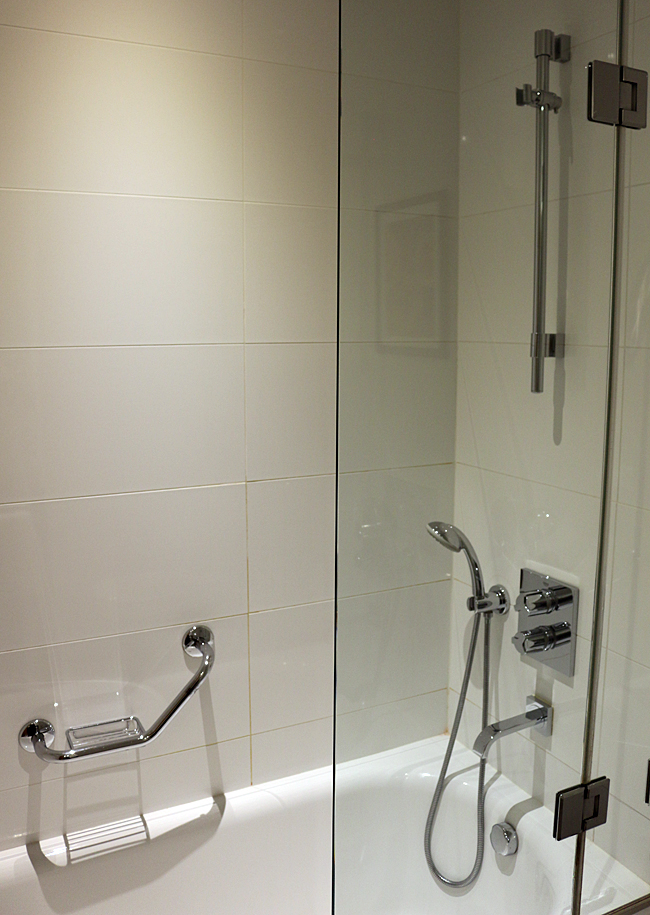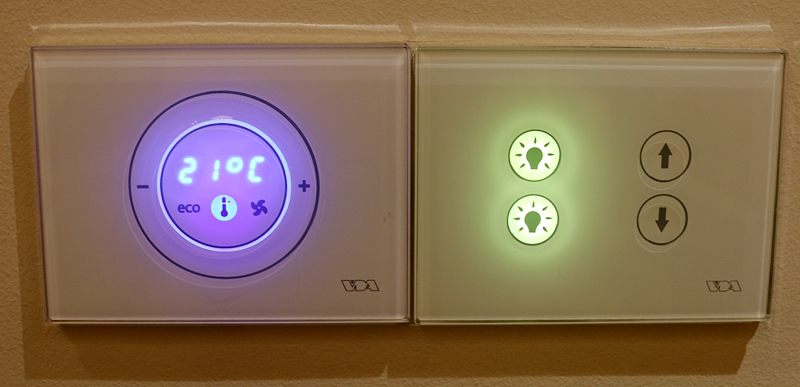You have spent all day sightseeing outside in the hot sun. Your feet are sweating in your sneakers and your legs have that dull aching feeling as though they just received a good workout after walking for miles. You cannot wait to get back into that hotel room to feel the air conditioned air envelop you in welcome coolness as you plop down on the bed to relax before showering.
Instead, the room feels warm and stagnant, with a sense of staleness to the air. You hear the climate control unit churning out air — and perhaps you even feel the movement of that air — but you do not feel refreshed. The thermostat is set to its lowest setting — perhaps 63 degrees Fahrenheit or 17 degrees Celsius — exactly the way you had left it this morning.
How can that be, you wonder?!?
Not Cool: Thermostats in Hotel Rooms Often are Not Under Your Control

You are not imagining things, as thermostats in hotel rooms are often not under your control, according to this article written by Scott McCartney for The Wall Street Journal — no matter how many times you push those buttons which supposedly control the temperature, leaving you to believe that the thermostat must be broken.
Technology is what transformed the thermostat on the walls of hotel rooms from a mechanical temperature sensor and fan-speed switch to an infrared heat and motion detector wirelessly networked into building controls which cut costs for hotel and resort properties by reducing the consumption of energy. “Many are tied to door switches, shutting off when people leave the room or even open a window or balcony door”, according to McCartney.

If you have traveled outside of the United States, you might have noticed that many hotel rooms are equipped with a slot next to the door inside of the entrance to the room to fit a plastic room key card — such as the one shown in the photograph above. The expectation is that you will stick the plastic room key card into the slot while you are in the room for the climate control system to operate; and you will remove the plastic room key card upon leaving the room, which automatically renders the climate control system inoperable. That may be fine for when you are out and not using the room to save energy and money for the hotel or resort property…
…but upon your return, you would expect to return the either hot or cold air — depending on the time of year during your stay — back to your liking; and have that done within minutes…
…but of course, that depends on whether or not you can control the thermostat — and the situation can be exacerbated when the hotel room is significantly hotter or colder than would be your preference.
Even if you can control the thermostat, the climate control system could automatically reduce air flow or shut down altogether during the middle of the night while you are sleeping — either because it might be programmed to do so; or because sensors can be fooled by people who do not move at all while sleeping soundly. Some guests who are sensitive to fluctuations in temperature — such as people who have been diagnosed with Raynaud’s disease — awaken prior to the desired time and cannot go back to sleep.
Although you can wave a part of your body to revive the climate control system if it is indeed equipped with a sensor, could you easily return to your slumber once awakened? What if you have an important meeting scheduled in a few hours and your sleep is disrupted? Even worse: what if your sleep is disrupted several times during the night due to a thermostat equipped with an overly sensitive sensor?
The climate control system not being easily adjustable was fifth from the top of 16 hotel pet peeves amongst frequent guests.
Resistance is Futile?
“Clever, clammy travelers have started resisting, scouring thermostat manuals to uncover secret overrides of the override”, according to McCartney. “One Tumblr blog, thermostatbypass, collects bypass instructions. Travelers have posted YouTube videos on various thermostat models. A Disney hotel discussion board also has thermostat bypass instructions. On some Inncom thermostats, for example, hold down Display then tap Off then tap the Up arrow. That puts the unit in VIP mode, giving control back to the occupant.”
Then again, some newer models of thermostats are programmed to block unauthorized overrides.

The good news is that new climate control systems are equipped with the latest technology designed to increase the comfort of guests in hotel and resort properties while costs are simultaneously reduced. “Some can measure and adjust humidity in a room”, according to McCartney. “Limiting how far guests can push thermostats reduces maintenance expenses (sometimes making a room too cold can freeze up air-conditioning condensers). And new room control systems, which have become much more affordable for hotels, comply with tougher energy-conservation building codes around the country and sometimes qualify for tax rebates.”
Spokespeople for both lodging companies and manufactures of modern thermostats claim that hotel guests complain less often and rarely attempt to override the thermostat; but does that mean that hotel guests are more comfortable overall — or is doing something about the situation simply too much of a bother to them where they simply just let it go for the night?
What About Those Units By the Window?

Greater than half of all hotel and motel rooms are equipped with self-contained climate control units mounted on an exterior wall — typically located near or underneath a window — which are known as Package Terminal Air Conditioning. They are considerably noisier than the units installed inside of the wall or ceiling of the hotel room…
…but even though there seems to be greater control of the temperature on those units, did you know that a lack of cleaning and maintenance can render their thermostats as inaccurate by as much as 20 percent?
When guests attempt to adjust the temperature or the speed of the fan on some of these units, they may not realize that the controls have purposely been disabled. This is because some hotel and motel properties have retrofitted wireless wall thermostats and door switches now that purchasing those devices are less expensive than they were years ago — but guests may not immediately realize that they need to find a thermostat on the wall to adjust the temperature and the speed of the fan rather than on the unit itself.
About Those Windows…

Years ago, the windows of hotel rooms could be opened — either fully or partially — but for a variety of reasons, many windows of hotel rooms are static and cannot be opened at all. Those reasons include the safety of the guest — as well as to save energy.
If you are fortunate enough to have a room equipped with a balcony, the door with which you can access that balcony can be opened — but ensure that it is closed and locked when you are not in the room.
Summary
Successfully reducing costs is one way to increase profits for a company; and that is no different in the lodging industry — but it should not be done at the expense of those guests. After all, the main purpose for hotel, motel and resort properties — regardless of budget — is to have a comfortable place to sleep while the guest is away from home…
…but if that comfort or sleep is disrupted, that aforementioned main purpose becomes moot. Why spend good money for a room at a hotel, motel or resort property if you do not get the rest you need?
Although I have had my share of frustration with thermostats in hotel rooms, I must admit that my overall experiences at hotel and resort properties over the years is that I have been comfortable. I can tolerate a room which is a little warm by a couple of degrees; and I can warm myself rather well under the covers when the room may be a little cooler than I would prefer.

Probably where my frustration is exacerbated the most is when I take a nice long hot shower — typically at night. The room can get rather hot and steamy once I am finished; so I attempt to cool it off — only to find that sometimes I cannot seem to do so with the thermostat in the room.
When I am a guest in a hotel room facing the ocean, I prefer to have the window or balcony door open so that I can sleep to the gentle onshore breeze, the roar of the water and the rustling of the palm trees. The scent of the beach only adds to that effect — something which cannot be replicated by a sealed room with a thermostat which cannot be controlled.
I do not mind the efforts of the lodging industry to save as much money as possible — as long as those attempts do not cause a noticeable disruption of the overall comfort of guests.
If you find yourself in a room in which the air is unacceptably uncomfortable and you are unable to control the thermostat to your liking, a old-fashioned telephone call or visit to the agent at the front desk informing him or her of the situation should rectify the issue. After all, management of the hotel property usually does want for you to be completely satisfied…
All photographs ©2014 and ©2015 by Brian Cohen.

